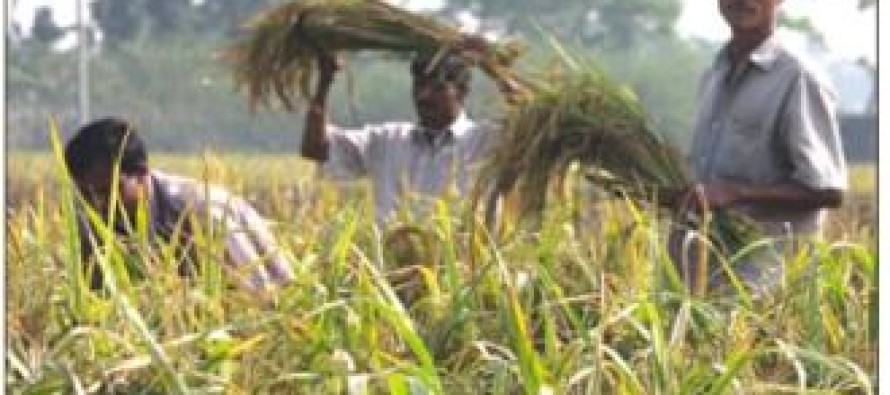Arsenic into the food chain: an aspect of the crisis

Arsenic in food crops:
In Bangladesh, the arsenic contaminated groundwater contains mostly arsenous acid, the most toxic forms of arsenic, which have found in various crops, including rice. The concentration of arsenic in rice in some contaminated region is recorded 5.3 mg/kg. Arsenic concentration is even higher in arum (150 mg/kg) and tomato (20.1 mg/kg) crops in affected areas. Villagers in some contaminated areas stop drinking from tainted tube-wells and divert its water onto crops. As a result of this, arsenic accumulates in their crops.
Arsenic in food is a matter:
Rice comprises more than 70% of a Bangladeshi’s caloric intake, and rice and curry boiled in arsenic contaminated water could be seen as a dominant source of arsenic. An adult Bangladeshi consumes average 1500 gm of cooked rice per day. Thus, the person exceeds allowable limit of consumption of arsenic through food per day. The maximum allowable limit of arsenic consumption per person per day is 0.2 mg/kg.
The toxicity of arsenic varies in the order arsenous acid > arsenic acid > monomethyl arsenic acid > dimethyl arsenic acid > arsenocholine > arsenobetaine. Only a few milligram of arsenous acid can be lethal to someone, while ingestion of a tablespoon of arsenobetaine does not create any adverse health effect.
Unfortunately, the ground water in Bangladesh contains arsenite and arsenate- the toxic arsenous acids, pose a serious threat to public health. One fifth of the population in most of the arsenic affected areas in the country is at risk of consuming arsenic from rice, wheat and vegetables.
Estimates of Bangladeshis exposed to high levels of arsenic vary between 28 and 77 million, more than half the country’s population. The World Health Organisation describes arsenic contamination of groundwater as ‘the largest mass poisoning of a population in history’ and the World Bank, as ‘one of the world’s primary environmental challenges’.
Strategies to combat the crisis:
Focus to non-arsenic food. While Bangladesh is yet to achieve sustainable self sufficiency in meeting the demand of rice for nearly 160 million people at present, it has become more than self sufficient in the production of potato- arsenic level in potato does not pose a threat to public health. Sweet potato, egg plant, snake gourd, ladies finger, pumpkin, kakrol, bitter gourd, turmeric, ginger and green chili are also safe as presence of arsenic in them are insignificant and does not pose a threat to health. Marine fish and seafood are also safe. They contain arsenic mostly in the form of arsenobetaine, and after ingestion it is readily excreted through urine without being metabolized by human.
Raise public awareness. When contaminated water is the main source of arsenic poisoning followed by arsenic-rich food, specially rice that has been irrigated with water contaminated by the arsenic, a considerable work has been done on arsenic removal from contaminated groundwater and alternative water supply options, but presence of arsenic in irrigation water has not received due attention in Bangladesh. Social workers, NGO workers and teachers in Bangladesh should come forward with public awareness development programs. Rain water harvest is a very good source of safe water.
Conduct research. The government of Bangladesh has to initiate, encourage and sponsor research into the possibility of arsenic sneaking into the food chain.


